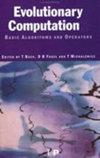Symmetry Breaking for Voting Mechanisms*
IF 3.4
2区 计算机科学
Q2 COMPUTER SCIENCE, ARTIFICIAL INTELLIGENCE
引用次数: 0
Abstract
Recently, Rowe and Aishwaryaprajna (2019) introduced a simple majority vote technique that efficiently solves Jump with large gaps, OneMax with large noise, and any monotone function with a polynomial-size image. In this paper, we identify a pathological condition for this algorithm: the presence of spin-flip symmetry in the problem instance. Spin-flip symmetry is the invariance of a pseudo-Boolean function to complementation. Many important combinatorial optimization problems admit objective functions that exhibit this pathology, such as graph problems, Ising models, and variants of propositional satisfiability. We prove that no population size exists that allows the majority vote technique to solve spin-flip symmetric functions of unitation with reasonable probability. To remedy this, we introduce a symmetry-breaking technique that allows the majority vote algorithm to overcome this issue for many landscapes. This technique requires only a minor modification to the original majority vote algorithm to force it to sample strings in {0,1}n from a dimension n-1 hyperplane. We prove a sufficient condition for a spin-flip symmetric function to possess in order for the symmetry-breaking voting algorithm to succeed, and prove its efficiency on generalized TwoMax, a spin-flip symmetric variant of Jump, and families of constructed 3-NAE-SAT and 2-XOR-SAT formulas. We also prove that the algorithm fails on the one-dimensional Ising model, and suggest different techniques for overcoming this. Finally, we present empirical results that explore the tightness of the runtime bounds and the performance of the technique on randomized satisfiability variants.投票机制的对称性打破。
最近,Rowe和Aishwaryaprajna(2019)介绍了一种简单的多数投票技术,该技术有效地解决了具有大间隙的Jump、具有大噪声的OneMax以及具有多项式大小图像的任何单调函数。在本文中,我们确定了该算法的一个病理条件:在问题实例中存在自旋翻转对称性。自旋翻转对称性是伪布尔函数对互补的不变性。许多重要的组合优化问题都承认了表现出这种病理性的目标函数,如图问题、伊辛模型和命题可满足性的变体。我们证明了不存在允许多数投票技术以合理概率求解单位化的自旋翻转对称函数的种群大小。为了解决这个问题,我们引入了一种对称性破坏技术,该技术允许多数投票算法在许多景观中克服这个问题。这种技术只需要对原始多数投票算法进行微小修改,就可以强制它在{0,1}n从维度n-1超平面。我们证明了自旋翻转对称函数具有对称性破缺投票算法成功的充分条件,并证明了它在广义TwoMax、Jump的自旋翻转对称变体以及构造的3-NAE-SAT和2-XOR-SAT公式族上的有效性。我们还证明了该算法在一维Ising模型上的失败,并提出了克服这一问题的不同技术。最后,我们给出了经验结果,探索了运行时边界的紧密性和该技术在随机可满足性变体上的性能。
本文章由计算机程序翻译,如有差异,请以英文原文为准。
求助全文
约1分钟内获得全文
求助全文
来源期刊

Evolutionary Computation
工程技术-计算机:理论方法
CiteScore
6.40
自引率
1.50%
发文量
20
审稿时长
3 months
期刊介绍:
Evolutionary Computation is a leading journal in its field. It provides an international forum for facilitating and enhancing the exchange of information among researchers involved in both the theoretical and practical aspects of computational systems drawing their inspiration from nature, with particular emphasis on evolutionary models of computation such as genetic algorithms, evolutionary strategies, classifier systems, evolutionary programming, and genetic programming. It welcomes articles from related fields such as swarm intelligence (e.g. Ant Colony Optimization and Particle Swarm Optimization), and other nature-inspired computation paradigms (e.g. Artificial Immune Systems). As well as publishing articles describing theoretical and/or experimental work, the journal also welcomes application-focused papers describing breakthrough results in an application domain or methodological papers where the specificities of the real-world problem led to significant algorithmic improvements that could possibly be generalized to other areas.
 求助内容:
求助内容: 应助结果提醒方式:
应助结果提醒方式:


